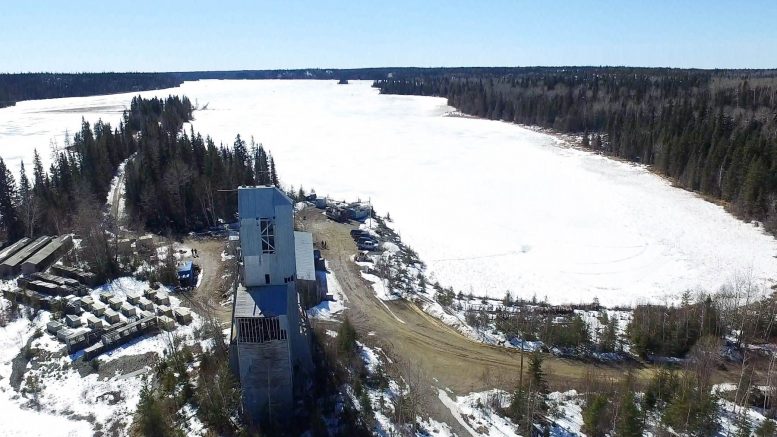The Flin Flon mining district, which straddles Manitoba and Saskatchewan, hosts Hudbay Minerals’ (TSX: HBM; NYSE: HBM) 777 mine.
The underground mine, which has been producing base and precious metals since 2004 and employs over 800 people, is approaching the end of its life, with final production slated for 2022. This is a cause of great concern for the local community of Flin Flon.
However, Max Porterfield, president and chief executive of Callinex Mines (TSXV: CNX; OTC: CLLXF), believes that the company’s flagship Pine Bay polymetallic project, 16 km from the 777 mine, could help allay the community’s concerns and offer a “bright future” for Flin Flon.
“The community of Flin Flon has been through a great deal of uncertainty about its future with the impending closure of the 777 mine and the announcement by Hudbay that they intend to leave Flin Flon,” Porterfield said in an interview.
The Flin Flon mining district, which has seen almost a century of continuous production, he added, needs a new discovery, and believes that Pine Bay could be it.
Callinex acquired the 60 sq. km Pine Bay property in 2009. The property is situated along a 10-km long geologically favourable trend in the Flin Flon Greenstone Belt.
Porterfield’s optimism for the future of Flin Flon is based on the company’s recently announced Rainbow discovery on Pine Bay.
The discovery, which is less than 500 metres from a high-voltage power line and 800 metres from a 212-metre long shaft with significant underground workings from previous exploration activities, comprises two high-grade copper, gold, silver, and zinc anomalies and was made during a 5,906-metre diamond drilling campaign in 2019 and 2020.
The Rainbow discovery drill hole, PBM-111, returned two intervals. The first interval, which intersected one anomaly, returned 3 metres grading 3.09% copper, 1.88% zinc, 0.75 gram gold per tonne, and 13.35 grams silver per tonne starting from 892 metres downhole.
The second interval cut 4 metres grading 4.12% copper, 0.06% zinc, 0.22 gram gold, and 2.21 grams silver from 933 metres downhole, including a higher-grade core of 3 metres grading 5.53% copper, 0.05% zinc, 0.28 gram gold, and 2.88 grams silver, and intersected the other anomaly.
“We made the discovery while drill testing an electromagnetic anomaly that was identified during a previous drilling campaign,” Porterfield said.
A subsequent Borehole Pulse Electromagnetic (BPEM) survey completed on the hole, he added, revealed a highly conductive source off-hole and to the north. The anomaly is located between two base and precious metals-rich massive sulphide anomalies occurring at 892 metres and 933 metres. This, he noted, suggests an abrupt thickening and possible merging of the two massive sulphide anomalies immediately to the north.
“Electromagnetics is the best geophysical method to directly vector to high-grade base and precious metals rich massive sulphide mineralization in the Flin Flon Greenstone Belt,” Porterfield said.
An initial interpretation of the results, he added, indicates that the direction of the first anomaly is to the south, and the second anomaly is to the north, increasing the potential strike length of the Rainbow discovery.
“The typical strike length for a lens in the Flin Flon greenstone belt is approximately 150 metres, and the plunge extent can be between five to eight times longer than the strike,” Porterfield said.
The anomalies, he added, are interpreted to occur within Hudbay’s Centennial mine horizon, which hosts the past-producing Centennial mine as well as Callinex’s Sourdough VMS deposit, located 7.5 km and 4 km, respectively, to the south of Pine Bay.
According to Porterfield, such off-hole anomalies are often seen in other large discoveries in the Flin Flon district, such as Hudbay’s Lalor mine.
“The discovery of the anomalies, combined with the borehole survey results, suggests that this could be substantial new find in Manitoba,” Porterfield said. “The Rainbow discovery has the potential to provide a bright future not just for our shareholders but also for the people of Flin Flon.”
Based on the results from the BPEM survey as well as previous drill results, the company is planning a follow-up drill campaign aimed at outlining the extent of the mineralization.
The company’s other Manitoba project, Flin Flon, is 3 km from Hudbay’s 777 mine. Recent geological and geophysical exploration, Porterfield noted, has confirmed the geological strata’s favourable nature and suggests there is potential for the presence of VMS mineralization.
In 2014, a 692-km airborne EM and magnetic survey completed on Flin Flon delineated 14 targets. Two areas with high potential to host a VMS deposit were identified in the northwest and central areas of the property and are believed to continue into Hudbay’s adjacent property area, Porterfield said.
The company also owns three properties in the Bathurst mining district in northeastern New Brunswick: the Nash Creek project, which is host to a large, near-surface zinc-lead-silver deposit; the Superjack project, which contains three separate VMS zones; and the early-stage Headway project.
At press time in Toronto, Callinex was trading at $2.85 per share within a 52-week trading range of 32¢ and $4.15. The company has 11 million shares outstanding for a $31.1-million market capitalization.






Be the first to comment on "Callinex says Pine Bay could revitalise Flin Flon"